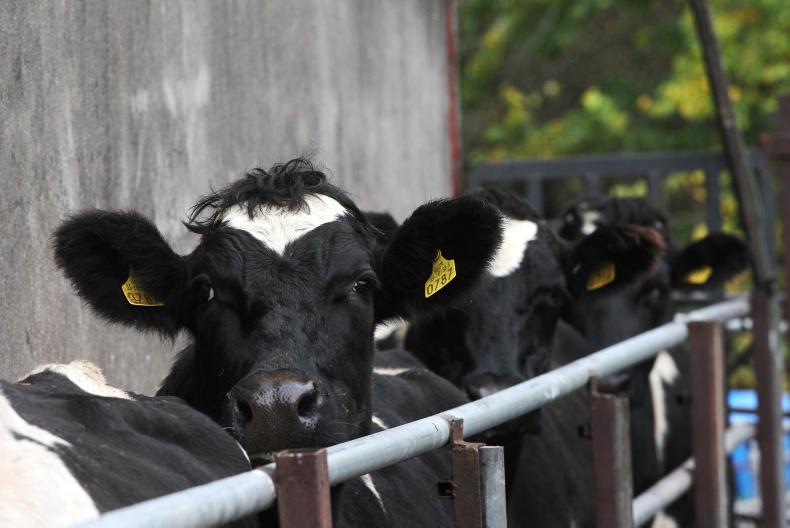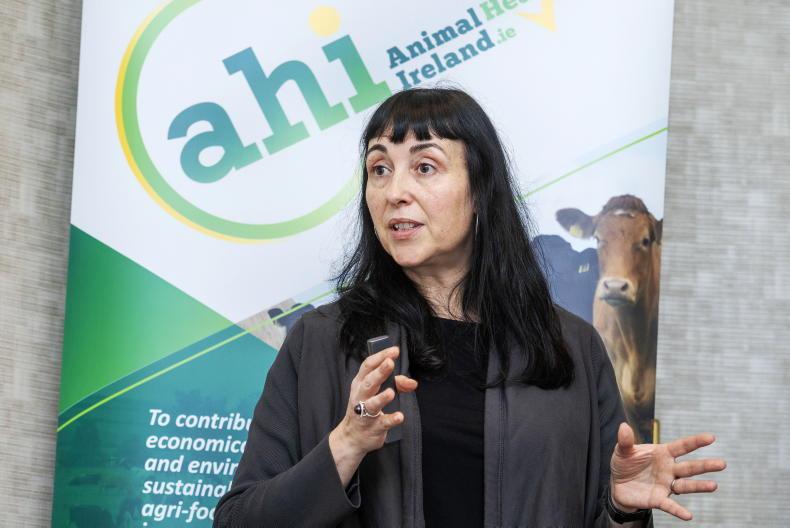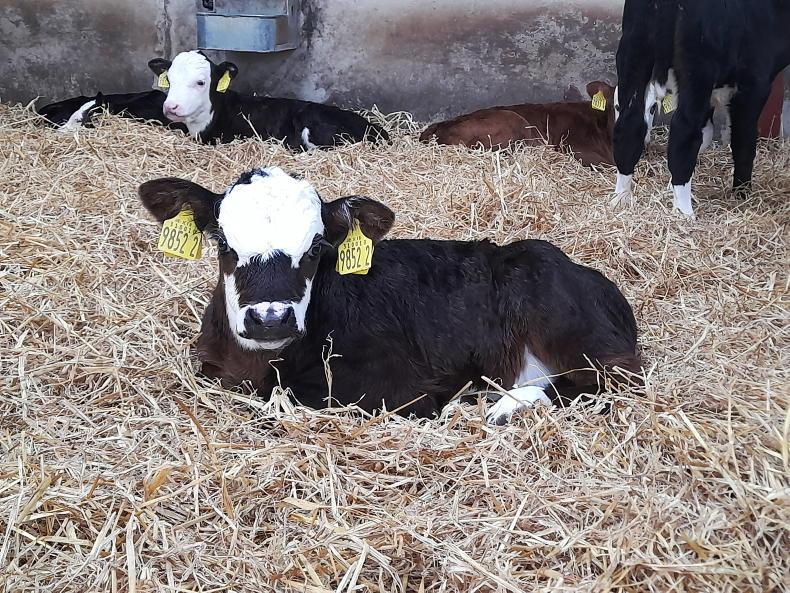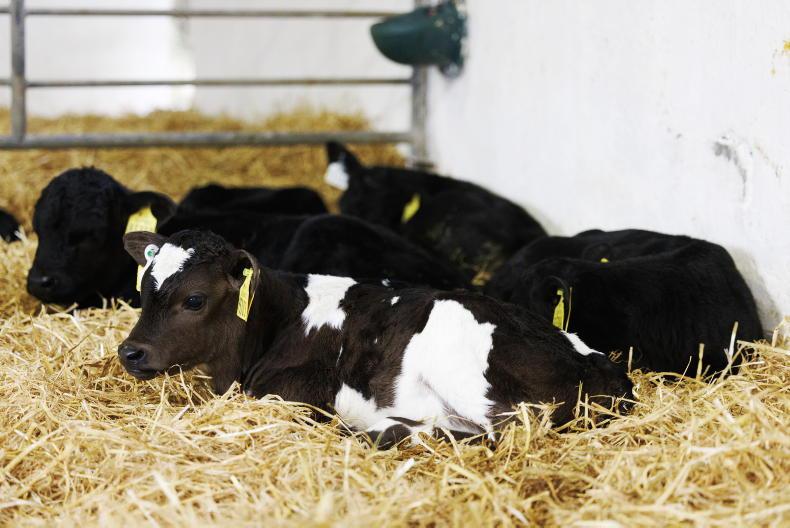Developing a herd health plan based around disease prevention has been key to improving the health status of Dairylink Ireland programme farms.
Although vaccinations are part of disease prevention, they must be incorporated into a wider management strategy. This includes a good biosecurity protocol, quarantine periods for bought-in livestock, isolation of sick animals and maintaining hygiene levels on farms.
These general measures will help to prevent a range of health issues, whereas some other measures are more disease-specific, such as keeping cattle out of water to prevent leptospirosis.
Programme farmers have developed vaccination programmes based on the current risks and disease history of their herds. This involves investigating and diagnosing the cause of abortions, scours and other health issues that occur on farms.
Bulk tank milk screening is useful for an overview of the levels of antibodies for specific diseases in herds. High antibody levels indicate that cows have had exposure to an infection at some point and have produced antibodies to fight it.
The type of test used will need to differentiate between wild and vaccine strains of antibodies if cows have been vaccinated for a certain disease. Individual cow testing may be needed to identify cows that are individual carriers if there are positive bulk tank milk screening results.
The various diseases outlined are not vaccinated for by all Dairylink farmers as every herd health plan is specific to each farm. Developing a health plan should take place in consultation with the farm vet as they are best placed to give farm specific advice.
What diseases are Dairylink farmers vaccinating for?
BVD
With BVD eradication programmes ongoing in both Northern Ireland and Republic of Ireland, the risk of herds encountering a source of BVD infection is reducing.
Animals that have had no contact with BVD in the past and are not vaccinated have no immunity to the viral disease and are therefore susceptible to becoming sick if infection does occur in the herd.
BVD causes scours, fertility problems and production losses in herds. It also suppresses an animal’s immune system which leaves it susceptible to other infections.
Strict biosecurity protocols are needed to reduce the risk of infection in herds and vaccination is still recommended for immunity in most herds. Vaccination requires two injections four weeks apart initially, and then an annual booster each year.
Salmonella
Salmonella is a bacterial disease that causes abortion in cows as well as scour and joint problems in young cattle. It can also cause sickness in humans if contact is made with infected faeces, aborted foetuses or unpasteurised milk.
The need to vaccinate depends on the risk of herd’s exposure to the disease which can be seen from a bulk tank milk test. Cows can become carriers of the disease and shed the infection throughout the herd.
Abortions from salmonella infections occur between five and eight months into pregnancy. It is recommended that cows are vaccinated before this high-risk period.
Unvaccinated herds and heifers require two injections, three weeks apart, and vaccinated animals require an annual booster shot.
Leptospirosis
Leptospirosis usually causes abortions in the last third of pregnancy and can be a cause of infertility and reduced milk yields.
Leptospirosis causing bacteria colonise kidneys and the disease is spread through the urine of infected cows. The bacteria survive in stagnant water and ingestion of contaminated water is another source of infection.
Similar to salmonella, leptospirosis is a bacterial infection that can be passed to humans. It is usually acquired from the urine of infected cows and causes severe flu-like symptoms. Problems with leptospirosis in herds can go unnoticed or underestimated as the disease can be difficult to diagnose.
Antibiotic treatment can control an infection in a herd during an abortion storm. Vaccinations are recommended to be administered before breeding which require two shots four weeks apart in the first year, with an annual booster thereafter.
IBR
The respiratory disease is most common in calves but can affect all ages of cattle with reduced milk yields, conception failure and abortion in cows.
The virus is mainly spread by direct contact between animals and immunity develops after primary infection.
These animals then become latent carriers and do not shed the virus. However, periods of stress can lead to reactivation and periods of shedding.
Vaccination makes it less likely that a latent carrier will reactivate and reduces the likelihood that a susceptible animal will become sick. Cattle born after effective vaccination is under way in herds should remain free from infection.
Both live and killed strains of the IBR vaccine are available and require booster injections every six months.
Rotavirus
Rotavirus is an infectious scour that occurs in young calves. The vaccine for the viral infection covers calves that are born between three and 12 weeks after the pregnant cow is injected.
It passes from the cow to the calf through colostrum, so calves need to be getting sufficient amounts of colostrum for the vaccine to be effective.
The rotavirus vaccine is a lot more expensive than most vaccines at around €10/dose, so it is generally recommended to only use it if there is a rotavirus problem.
The Dairylink farmers that vaccinate for rotavirus only vaccinate cows that are due to calve later in the season when levels of the virus have built up in calf accommodation.
Read more
The many causes of fertility problems in cows
Health plan revised after milk test results
Full coverage: Dairylink Ireland
Developing a herd health plan based around disease prevention has been key to improving the health status of Dairylink Ireland programme farms.
Although vaccinations are part of disease prevention, they must be incorporated into a wider management strategy. This includes a good biosecurity protocol, quarantine periods for bought-in livestock, isolation of sick animals and maintaining hygiene levels on farms.
These general measures will help to prevent a range of health issues, whereas some other measures are more disease-specific, such as keeping cattle out of water to prevent leptospirosis.
Programme farmers have developed vaccination programmes based on the current risks and disease history of their herds. This involves investigating and diagnosing the cause of abortions, scours and other health issues that occur on farms.
Bulk tank milk screening is useful for an overview of the levels of antibodies for specific diseases in herds. High antibody levels indicate that cows have had exposure to an infection at some point and have produced antibodies to fight it.
The type of test used will need to differentiate between wild and vaccine strains of antibodies if cows have been vaccinated for a certain disease. Individual cow testing may be needed to identify cows that are individual carriers if there are positive bulk tank milk screening results.
The various diseases outlined are not vaccinated for by all Dairylink farmers as every herd health plan is specific to each farm. Developing a health plan should take place in consultation with the farm vet as they are best placed to give farm specific advice.
What diseases are Dairylink farmers vaccinating for?
BVD
With BVD eradication programmes ongoing in both Northern Ireland and Republic of Ireland, the risk of herds encountering a source of BVD infection is reducing.
Animals that have had no contact with BVD in the past and are not vaccinated have no immunity to the viral disease and are therefore susceptible to becoming sick if infection does occur in the herd.
BVD causes scours, fertility problems and production losses in herds. It also suppresses an animal’s immune system which leaves it susceptible to other infections.
Strict biosecurity protocols are needed to reduce the risk of infection in herds and vaccination is still recommended for immunity in most herds. Vaccination requires two injections four weeks apart initially, and then an annual booster each year.
Salmonella
Salmonella is a bacterial disease that causes abortion in cows as well as scour and joint problems in young cattle. It can also cause sickness in humans if contact is made with infected faeces, aborted foetuses or unpasteurised milk.
The need to vaccinate depends on the risk of herd’s exposure to the disease which can be seen from a bulk tank milk test. Cows can become carriers of the disease and shed the infection throughout the herd.
Abortions from salmonella infections occur between five and eight months into pregnancy. It is recommended that cows are vaccinated before this high-risk period.
Unvaccinated herds and heifers require two injections, three weeks apart, and vaccinated animals require an annual booster shot.
Leptospirosis
Leptospirosis usually causes abortions in the last third of pregnancy and can be a cause of infertility and reduced milk yields.
Leptospirosis causing bacteria colonise kidneys and the disease is spread through the urine of infected cows. The bacteria survive in stagnant water and ingestion of contaminated water is another source of infection.
Similar to salmonella, leptospirosis is a bacterial infection that can be passed to humans. It is usually acquired from the urine of infected cows and causes severe flu-like symptoms. Problems with leptospirosis in herds can go unnoticed or underestimated as the disease can be difficult to diagnose.
Antibiotic treatment can control an infection in a herd during an abortion storm. Vaccinations are recommended to be administered before breeding which require two shots four weeks apart in the first year, with an annual booster thereafter.
IBR
The respiratory disease is most common in calves but can affect all ages of cattle with reduced milk yields, conception failure and abortion in cows.
The virus is mainly spread by direct contact between animals and immunity develops after primary infection.
These animals then become latent carriers and do not shed the virus. However, periods of stress can lead to reactivation and periods of shedding.
Vaccination makes it less likely that a latent carrier will reactivate and reduces the likelihood that a susceptible animal will become sick. Cattle born after effective vaccination is under way in herds should remain free from infection.
Both live and killed strains of the IBR vaccine are available and require booster injections every six months.
Rotavirus
Rotavirus is an infectious scour that occurs in young calves. The vaccine for the viral infection covers calves that are born between three and 12 weeks after the pregnant cow is injected.
It passes from the cow to the calf through colostrum, so calves need to be getting sufficient amounts of colostrum for the vaccine to be effective.
The rotavirus vaccine is a lot more expensive than most vaccines at around €10/dose, so it is generally recommended to only use it if there is a rotavirus problem.
The Dairylink farmers that vaccinate for rotavirus only vaccinate cows that are due to calve later in the season when levels of the virus have built up in calf accommodation.
Read more
The many causes of fertility problems in cows
Health plan revised after milk test results
Full coverage: Dairylink Ireland










SHARING OPTIONS